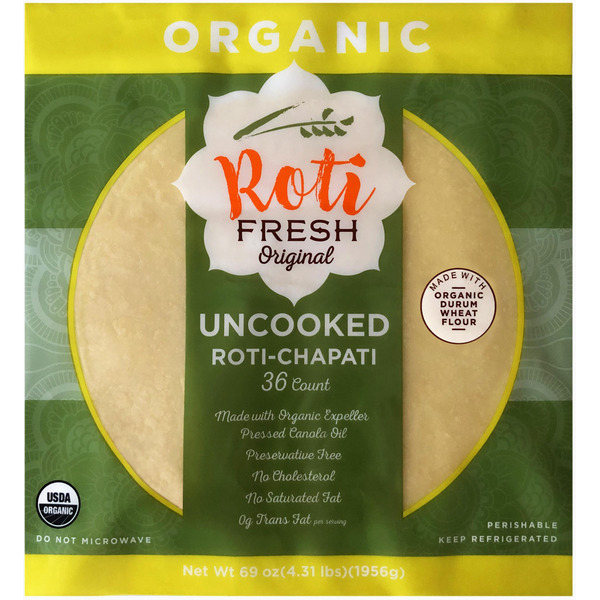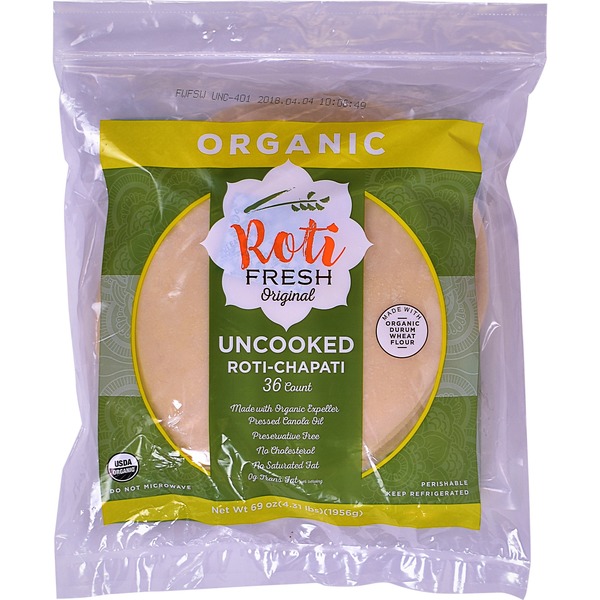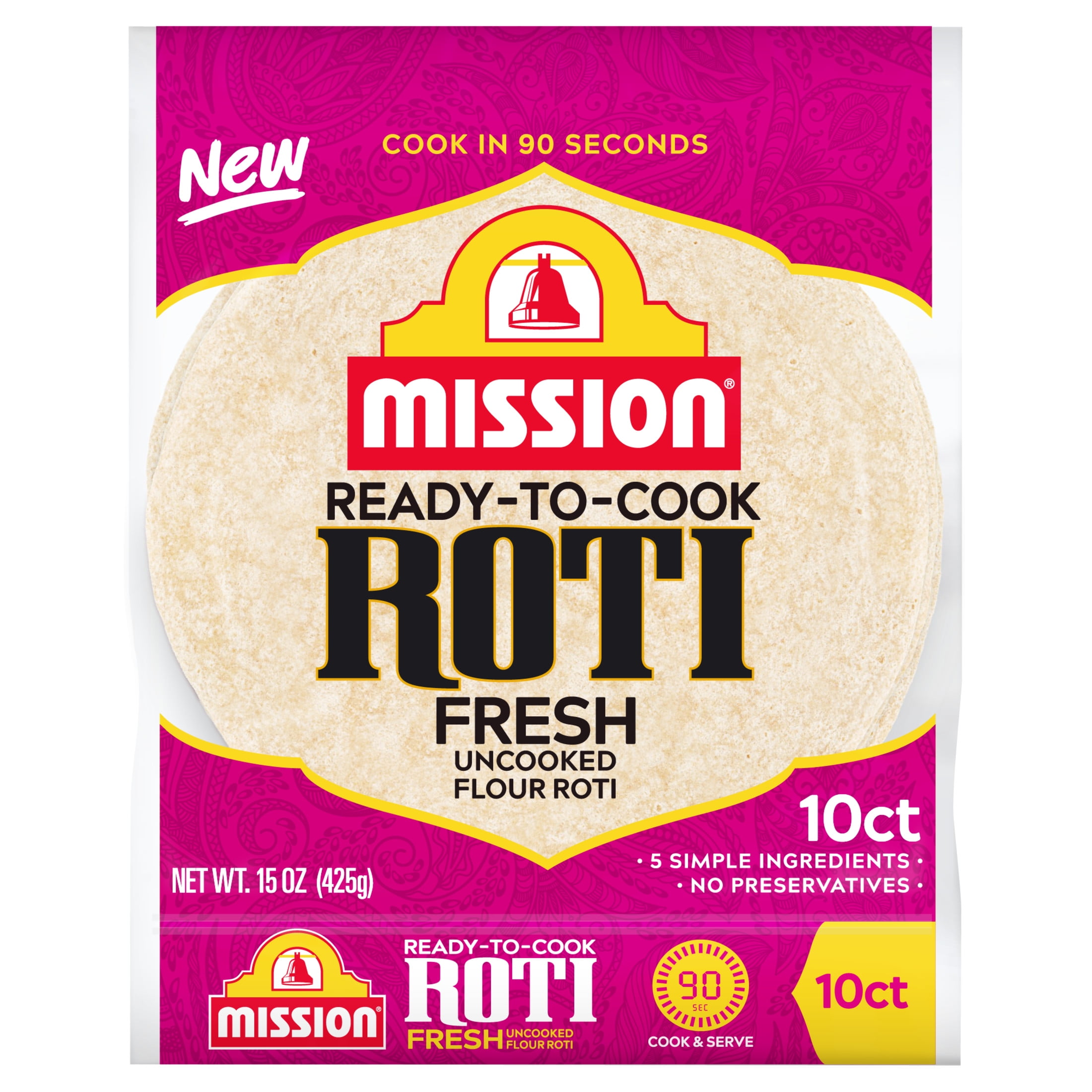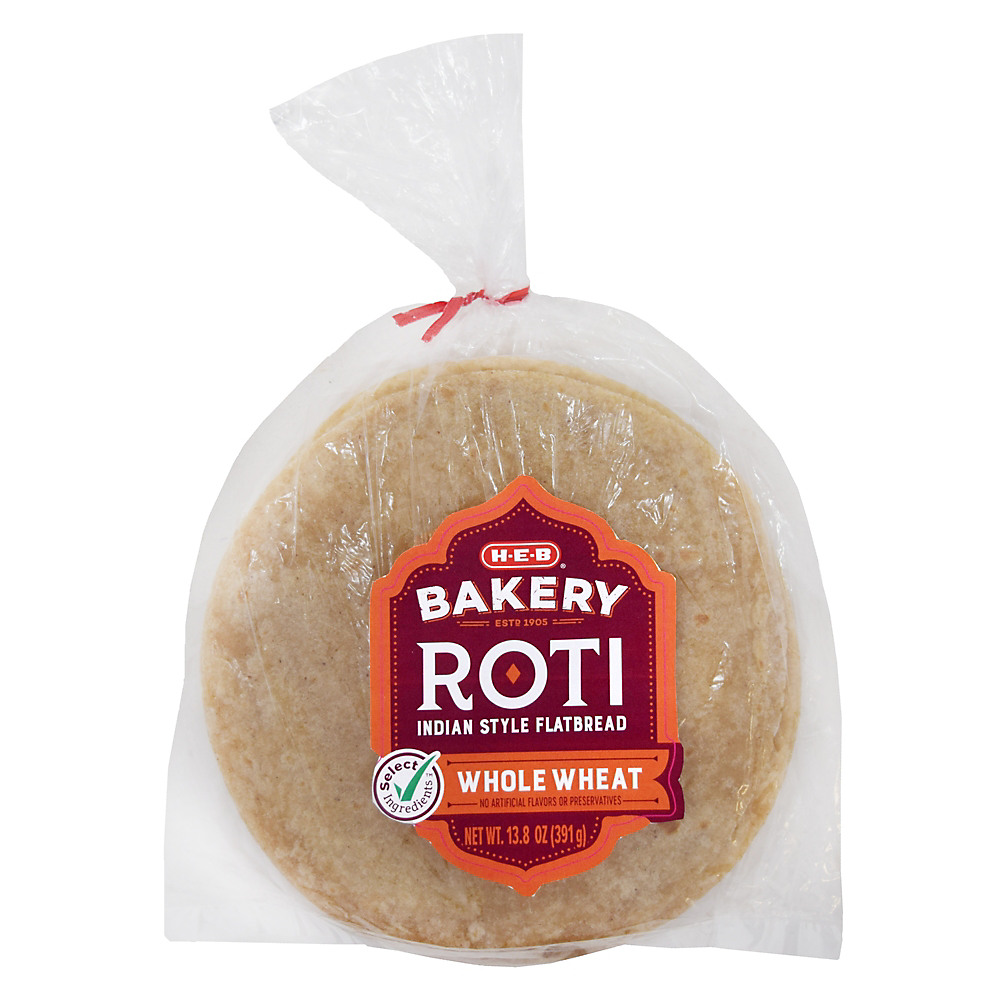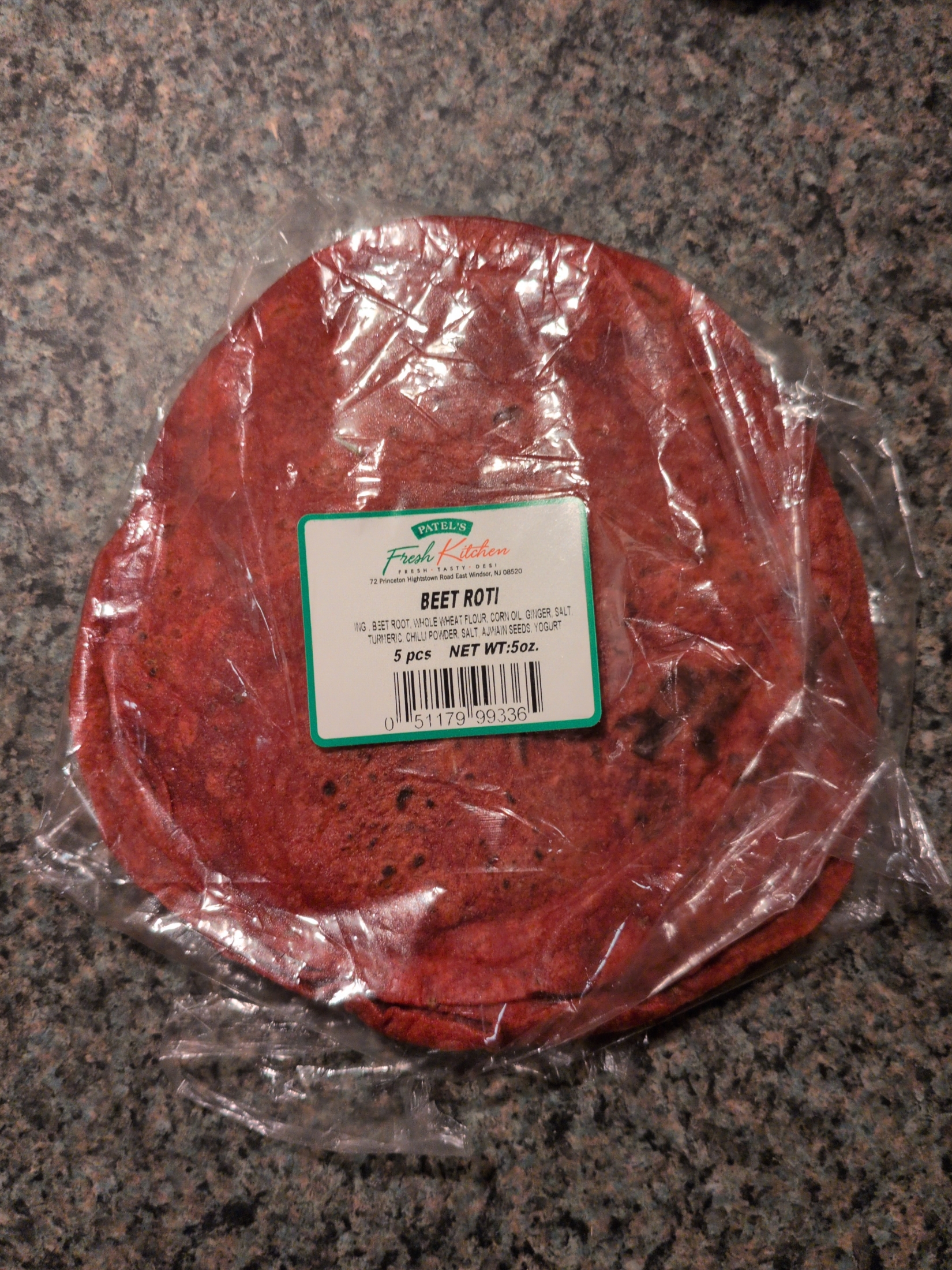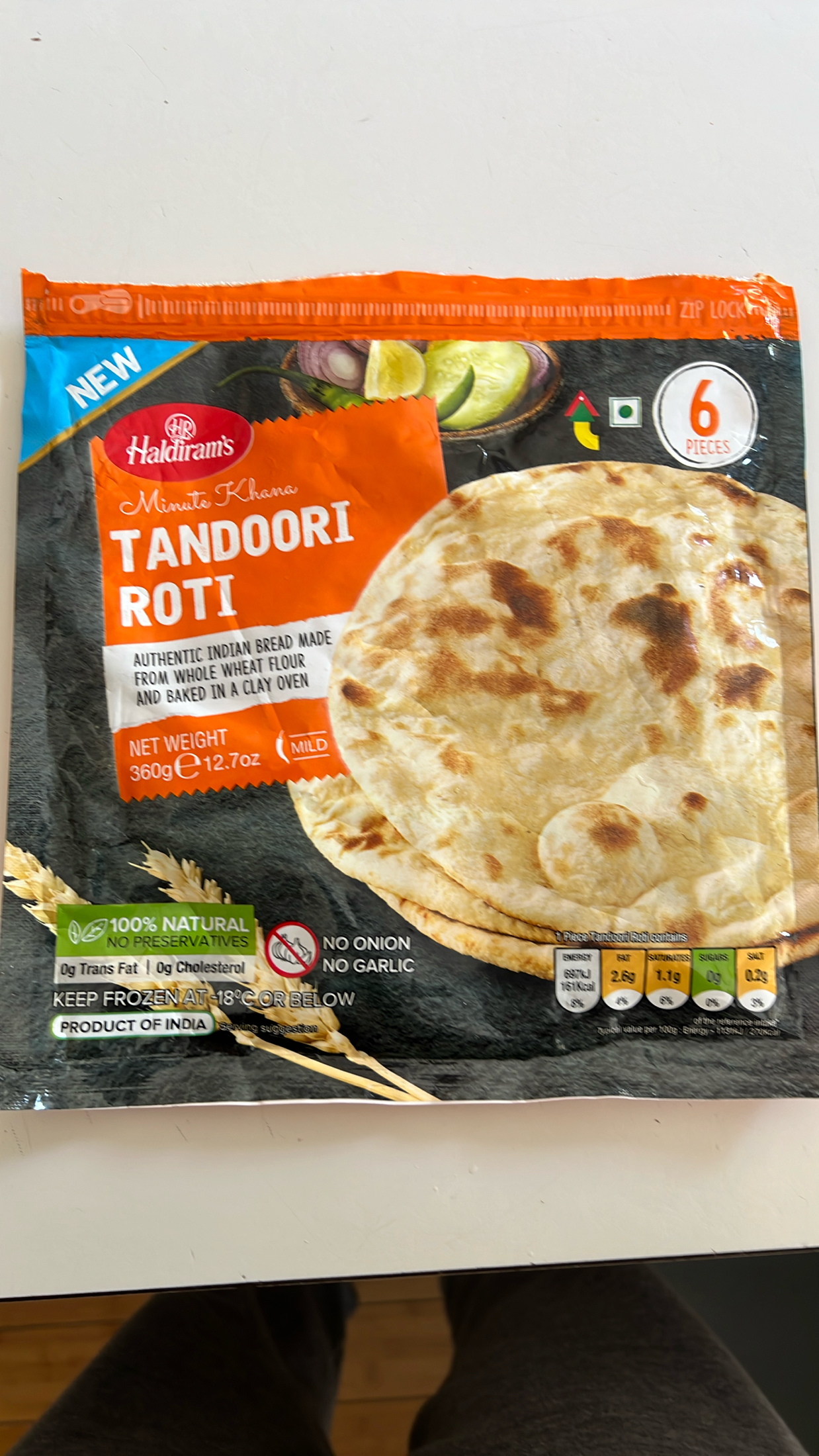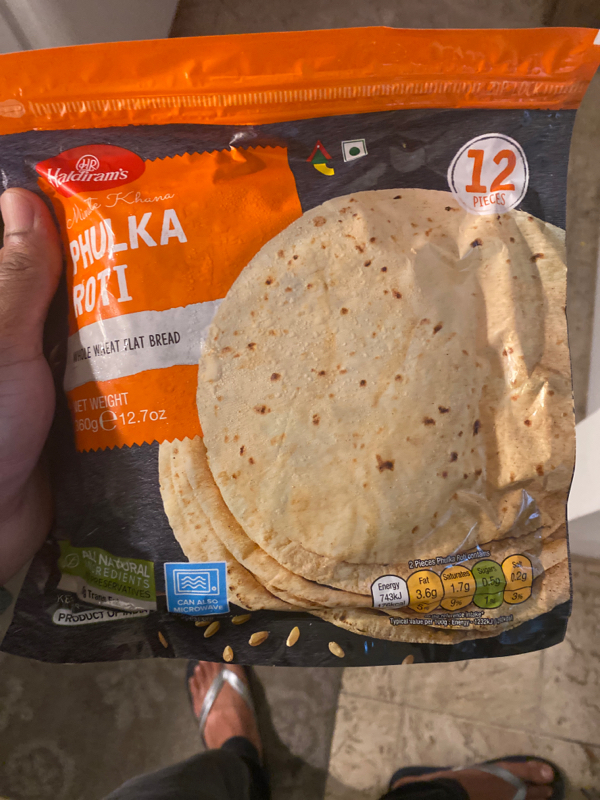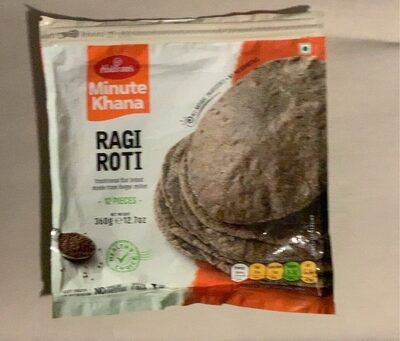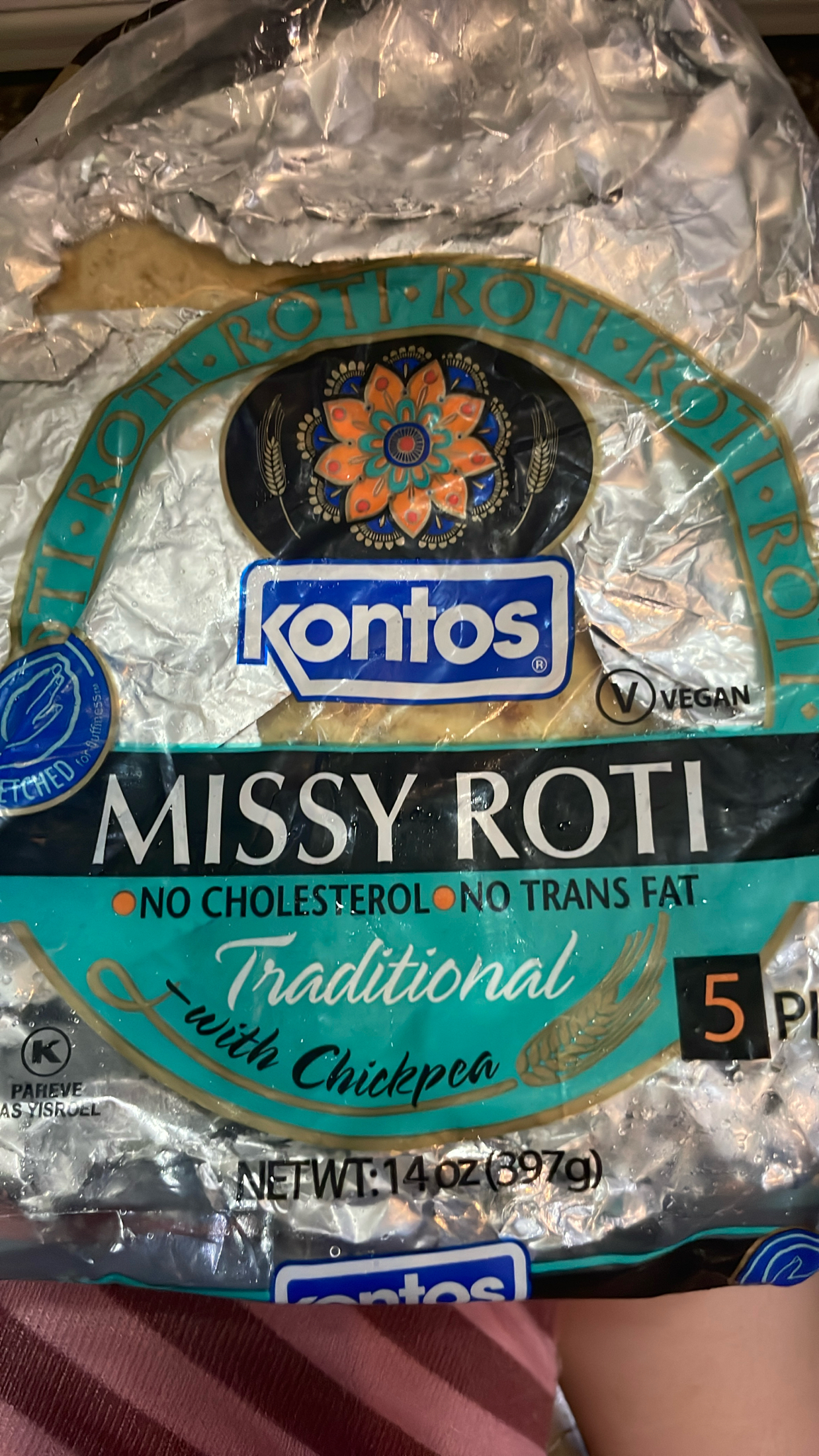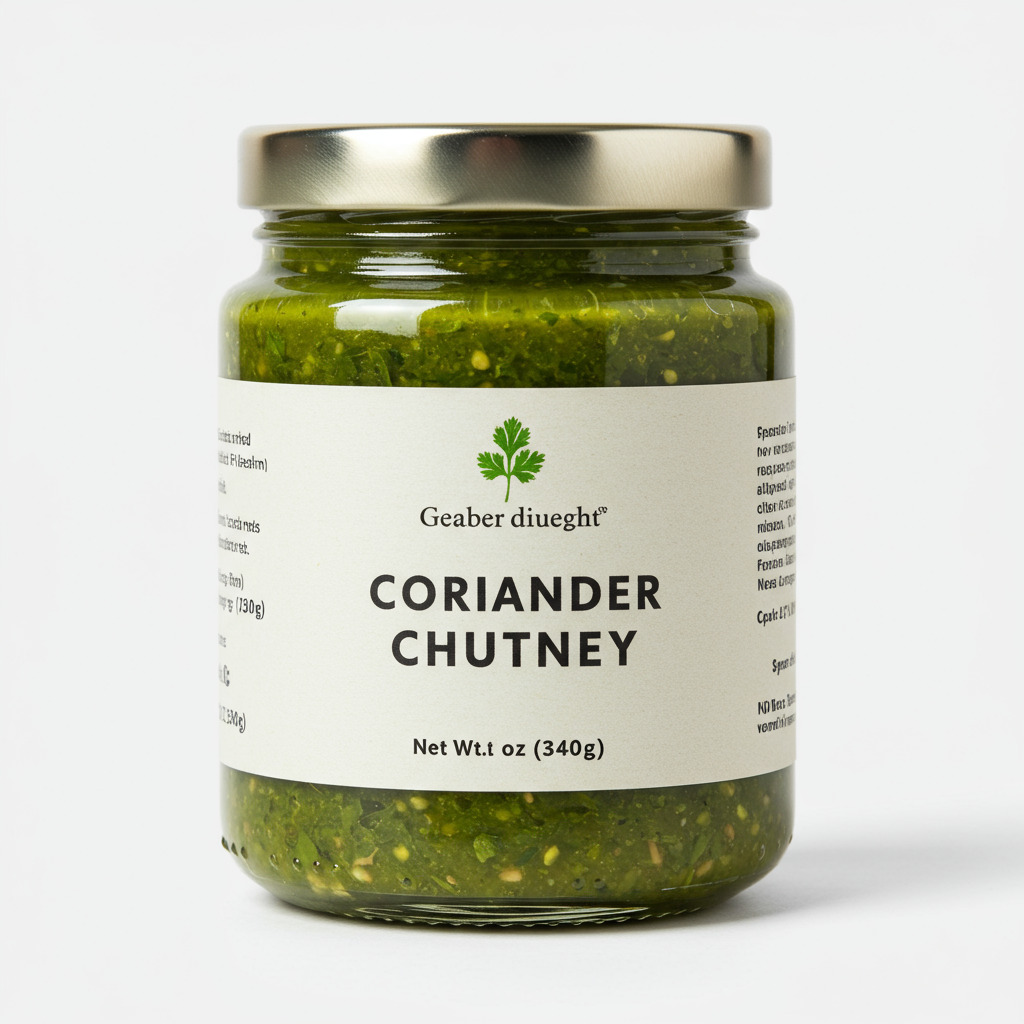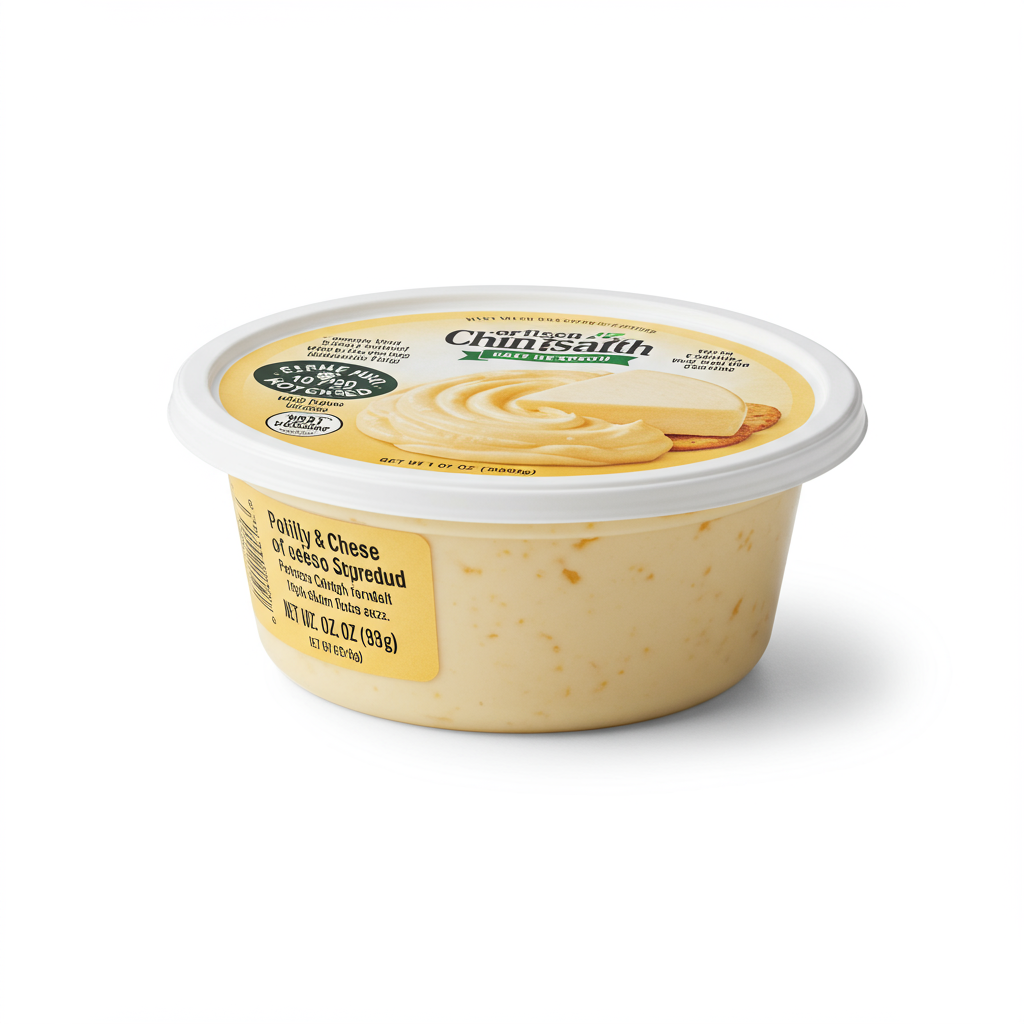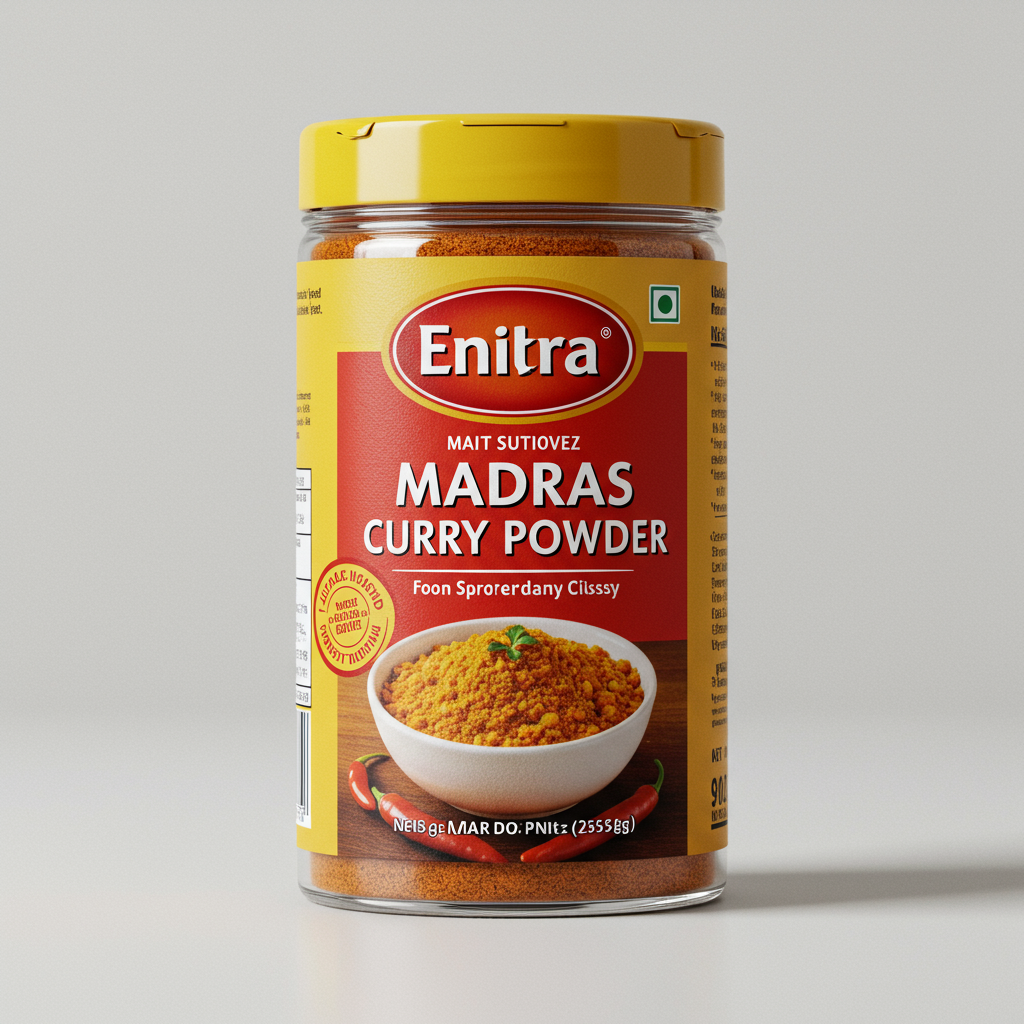Roti
Roti is a type of unleavened bread that originated from the Indian subcontinent and is staple in many Asian cuisines. Traditionally cooked on a flat iron griddle (tava), it’s made from wholewheat flour (atta), water, and salt, kneaded into dough and rolled out into a thin, round disc.
Enjoyed hot off the tava with a dap of ghee (clarified butter), roti is typically served as an accompaniment to meals, used as a utensil to scoop up curries and vegetables. It’s versatile, wholesome and, despite its simple ingredients, skillfully labor-intensive and rewarding to master.
2%
CARBS
46%
FAT
52%
PROTEIN
39 Roti Products
Roti Organic Uncooked Roti-Chapati
Roti Fresh Original Organic Chapati, 36 ct
Mission Ready-To-Cook Roti, 10 Count
H-E-B Bakery Whole Wheat Roti Indian-Style Flatbread
Beet Roti
Tandoori Roti
Phulka Roti
Haldiram's Ragi roti
Missy Roti
Roti Fresh Original Uncooked Roti Chapati Indian Flatbread Refrigerated Resealable Bag
Roti Is Frequently Used With
Roti FAQ
Roti often appears as a simple dish, just requiring whole wheat flour, water, and salt, but there's much more to cooking the perfect roti than what it initially seems. Common problems people encounter are the rotis not puffing, not being soft, or being burnt. The key to perfect rotis lies in the kneading of the dough, the heat of the tava, and the flipping technique. Also, depending on the region, the rotis can be thin and soft or slightly thicker and more filling.
Dabbing a small amount of ghee keeps them soft and enhances taste, but it's optional. Initially, making rotis can be a little time-consuming, but practicing the technique reduces preparation time greatly. Any additional bits of dough can also be kept in the refrigerator for later use.
One lesser-known tip is to rest the dough for 15-20 minutes before rolling, which allows gluten strands to relax and results in softer rotis. Another is using lukewarm water to knead the dough, which helps to make softer rotis. Adding a bit of oil or ghee while kneading the dough also helps to keep it moist, makes it easier to roll, and results in softer rotis.
Why isn't my roti puffing up?
How can I make my roti softer?
How can I prevent my roti from burning?
Why does my roti turn out too thick or too thin?
Can I use any type of flour to make roti?
Why is my roti hard and not soft?
Can I store the roti dough for later use?
Why is my dough sticking to the rolling pin?
Can I use oil instead of ghee for cooking rotis?
Any tips for rolling the roti in a perfect round shape?
Substitutes
Health Info
Macros
30g
CARBS
0g
FAT
4g
PROTEIN
Allowed on these diets
LOW FAT
HIGH CALCIUM
VEGETARIAN
MEDITERRANEAN
LOW CARB
VEGAN
LACTOSE FREE
Contains these allergens
WHEAT

